Lights, camera, action! If you are in the business of hosting movie nights or organizing film-related events, having visually appealing and professional-looking movie ticket templates is a must. With the right design software, a touch of creativity, and the knowledge of key elements, you can create stunning movie ticket templates with ease.
In this post, we will explore the basics of movie ticket design, the importance of well-designed tickets, choosing the right design software, step-by-step guide for creating templates, tips for enhancing design, and printing and distributing your tickets.
Table of Contents
Movie Ticket Templates
When it comes to designing movie tickets, it is essential to have a clear understanding of the basics. Movie tickets serve as a representation of the event and create a first impression for your guests. They not only provide essential information about the movie and its screening details but also reflect the overall theme and ambiance of the event. Therefore, your ticket design should align with the genre and style of the movie being showcased.
What is the importance of a well-designed movie ticket? A well-designed ticket captures the attention of moviegoers and adds to their overall movie-watching experience. It creates anticipation and excitement, making them eager to attend the event. A visually appealing ticket can also serve as a memento or keepsake, reminding attendees of the fantastic time they had at your event.
Let’s delve deeper into the elements of a well-designed movie ticket. One crucial aspect is the use of colors and graphics. The color scheme should complement the movie’s theme and evoke the right emotions. For example, if you are screening a romantic comedy, using soft pastel colors can create a warm and inviting atmosphere. On the other hand, if you are showcasing an action-packed thriller, bold and vibrant colors can heighten the sense of excitement.
In addition to colors, the graphics on the ticket should also be carefully chosen. Incorporating elements from the movie, such as iconic symbols or characters, can instantly grab the attention of moviegoers and create a sense of familiarity. This not only enhances the ticket’s visual appeal but also helps in building anticipation for the film.
Key Elements of a Movie Ticket Template

Before diving into the design process, it is crucial to understand the key elements that make up a movie ticket template. These elements include:
- Event Information: Clearly display the name of the movie, date, time, and venue.
- Design Elements: Incorporate visually appealing graphics, images, and fonts that align with the theme of the event.
- Seating Details: Indicate the seating arrangement and seat number, if applicable.
- Ticket Price: Clearly state the ticket price and any discounts or special offers.
- Barcodes or QR Codes: Include a barcode or QR code for easy ticket verification.
Let’s delve deeper into each of these key elements to understand their significance in creating an effective movie ticket template.
Firstly, the event information section plays a vital role in providing essential details to the ticket holder. It allows them to know the movie’s title, the date and time of the screening, and the venue where it will take place. This information helps moviegoers plan their schedule accordingly and ensures a smooth experience.
Secondly, the design elements of a movie ticket template are crucial in capturing the attention of potential attendees. By incorporating visually appealing graphics, images, and fonts that align with the theme of the event, the ticket becomes more enticing and memorable. A well-designed ticket can create anticipation and excitement, making the moviegoing experience even more enjoyable.
The seating details section is particularly important for events that have assigned seating. By indicating the seating arrangement and seat number on the ticket, attendees can easily locate their designated spot in the theater. This eliminates confusion and ensures a seamless seating process, contributing to a positive overall experience.
Next, the ticket price section provides transparency to the attendees regarding the cost of the movie ticket. Clearly stating the ticket price, along with any discounts or special offers, helps potential moviegoers make informed decisions. It also allows event organizers to effectively communicate the value of the movie experience they are offering.
Lastly, including barcodes or QR codes on the movie ticket template simplifies the ticket verification process. With a simple scan, event staff can quickly validate the ticket’s authenticity and grant entry to the movie screening. This not only enhances security but also improves the efficiency of the check-in process, reducing wait times and ensuring a seamless entry for attendees.
By understanding and incorporating these key elements into a movie ticket template, event organizers can create an engaging and informative ticket that enhances the overall moviegoing experience for attendees.
Choosing the Right Design Software
Now that you understand the basics of movie ticket design, it’s time to choose the right design software to bring your templates to life. Several popular design tools are available, each with its own set of features and capabilities. It is essential to weigh the pros and cons of these software options before making a decision.
Overview of Popular Design Tools
Some popular design tools for creating movie ticket templates include Adobe Photoshop, Canva, and Microsoft Word. Adobe Photoshop is a powerful software with extensive design capabilities, but it may require advanced graphic design skills. Canva is a user-friendly online platform that offers a variety of pre-made templates and customization options. Microsoft Word is a widely accessible software that allows for simple ticket design creation.
Factors to Consider When Choosing Software
When deciding on the right design software, consider factors such as your design skills, budget, accessibility, and the level of customization required. If you are familiar with graphic design tools and have a higher budget, Adobe Photoshop may be the ideal choice. However, if you prefer a user-friendly interface and cost-effective solution, Canva or Microsoft Word may be more suitable options.
Another important factor to consider is the level of support and resources available for each software. Adobe Photoshop, being an industry-standard design software, has a vast community of users and extensive online tutorials and forums. This means that if you encounter any issues or need guidance, you can easily find help from experienced designers. Canva, on the other hand, also has a supportive community and offers customer support, ensuring that you can get assistance if you run into any difficulties during the design process.
Additionally, think about the future scalability of your chosen software. If you anticipate expanding your ticket design projects or venturing into other design endeavors, Adobe Photoshop provides a wide range of advanced features that can accommodate your growing needs. Canva and Microsoft Word, while suitable for basic ticket design, may have limitations when it comes to more complex design projects.
Step-by-Step Guide to Creating Movie Ticket Templates

Now that you have chosen your design software, let’s dive into a step-by-step guide to creating movie ticket templates:
Starting Your Template from Scratch
1. Open your chosen design software and create a new document with the desired ticket dimensions.
2. Set the background color or image to create the base of your ticket design.
3. Add text boxes for event information, including the movie title, date, time, and venue.
4. Customize the text font, size, and color to align with the theme of the event.
5. Incorporate design elements, such as graphics, images, or illustrations, that reflect the movie’s genre or theme.
6. Arrange the elements in a visually pleasing layout, ensuring readability and balance.
7. Add seating details, ticket price, and any additional information required for guests.
8. Include a barcode or QR code for easy ticket verification.
9. Review and make any necessary adjustments or refinements to ensure a polished and professional ticket template.
Customizing Pre-Made Templates
1. Open your chosen design software and explore the selection of pre-made ticket templates.
2. Select a template that aligns with your event theme or customize a generic template to match your desired style.
3. Replace the existing text with your event information, including the movie title, date, time, and venue.
4. Customize the text font, size, and color to enhance the visual appeal of the template.
5. Personalize the design elements, such as graphics and images, to better reflect the movie being showcased.
6. Add seating details, ticket price, and any additional information required for guests.
7. Include a barcode or QR code for easy ticket verification.
8. Review and make any necessary adjustments to ensure your customized template is visually captivating and informative.
Creating movie ticket templates is an exciting process that allows you to unleash your creativity and capture the essence of the event. Whether you choose to start from scratch or customize pre-made templates, the key is to create a design that not only conveys the necessary information but also evokes the excitement and anticipation associated with going to the movies.
When starting from scratch, you have complete control over every aspect of the ticket design. This allows you to tailor it to the specific movie, genre, or theme of your event. By carefully selecting the background color or image, you can set the tone and create a visually appealing canvas for your ticket. Adding text boxes for event details and customizing the font, size, and color ensures that the information is clear and legible while maintaining consistency with the event’s theme.
One of the most exciting parts of creating movie ticket templates is incorporating design elements that reflect the movie’s genre or theme. Whether it’s using graphics, images, or illustrations, these elements help create a visual connection between the ticket and the movie, enhancing the overall experience for the guests. Additionally, including seating details, ticket price, and any additional information required ensures that guests have all the necessary information at their fingertips.
If you prefer to customize pre-made templates, you can save time while still achieving a visually captivating result. By selecting a template that aligns with your event theme or style, you have a solid foundation to work with. Replacing the existing text with your event information and customizing the font, size, and color allows you to personalize the template to your liking. Adding design elements that better reflect the movie being showcased further enhances the connection between the ticket and the event.
Remember, the goal is to create a ticket template that not only looks visually appealing but also provides all the necessary information in a clear and concise manner. By following this step-by-step guide, you’ll be well on your way to creating stunning movie ticket templates that will leave a lasting impression on your guests.
Tips for Enhancing Your Movie Ticket Design
Creating a visually stunning movie ticket template involves more than just the basics. Consider implementing the following tips to take your design to the next level:
Using Colors and Fonts Effectively
Choose a color scheme that complements the movie genre and theme. Use fonts that are easy to read and align with the overall design. Experiment with font sizes, styles, and colors to create a visually appealing hierarchy of information.
Incorporating Images and Graphics
Images and graphics can play a significant role in capturing the attention of moviegoers. Select captivating images that evoke the desired emotions and reflect the movie’s theme. Use graphics, illustrations, or icons to enhance the visual appeal of the ticket template.
Printing and Distributing Your Movie Tickets
Once you have created your stunning movie ticket templates, it’s time to bring them to life in the physical or digital world. Consider the following aspects when printing and distributing your movie tickets:
Choosing the Right Paper and Printing Techniques
Select high-quality paper that enhances the overall look and feel of the ticket. Consider options such as glossy or matte finishes, depending on the desired aesthetic. Furthermore, explore printing techniques like embossing or foiling to add an extra touch of elegance.
Digital vs. Physical Tickets: What to Consider
Decide whether you will be issuing digital tickets or physical printed tickets. Digital tickets can provide convenience and flexibility, while physical tickets can act as collectibles or souvenirs. Consider your target audience and the nature of the event when making this decision.
With the knowledge of the basics and the right design software, creating stunning movie ticket templates is an achievable task. Incorporate creativity, pay attention to the key elements, and make use of the step-by-step guide provided. Remember to enhance your design with effective color choices, fonts, images, and graphics. Finally, print and distribute your tickets using the appropriate paper and technique. Lights, camera, ticket, action!
FAQs
How to make a movie night ticket?
For home printed movie night tickets, a template size of 3 inches wide by 2 inches tall is common. This allows for printing multiple tickets on an 8.5″ x 11″ sheet of paper. Commercial theater tickets are generally no bigger than 2.5 inches wide by 1 inch tall to fit in pocket/wallets.
How to make a movie night ticket?
To make a movie night ticket, design a template on a computer using shapes, colors, graphics and text placeholders. Include fields like movie title, date, seat number, patron name etc. Print on cardstock, customizing each with unique details. Use decorative edges like perforations. Have guests present tickets for admission.
How to make movie tickets online?
Online services allow creating custom digital movie tickets too. Sites like Canva have customizable templates to personalize with backgrounds, colors, fonts, graphics and fields. Movie Maker apps help generate unique ticket QR codes to scan. Email digital tickets as printable PDFs or mobile passes.
What is the size of a ticket stub?
Standard ticket stub sizes at major movie theaters range around 3 x 1.5 inches to 2.75 x 1.25 inches. The stub tear-off portion contains details like movie, theater, date, and seat. Some may be smaller strips or bigger graphic souvenir styles depending on the chain.














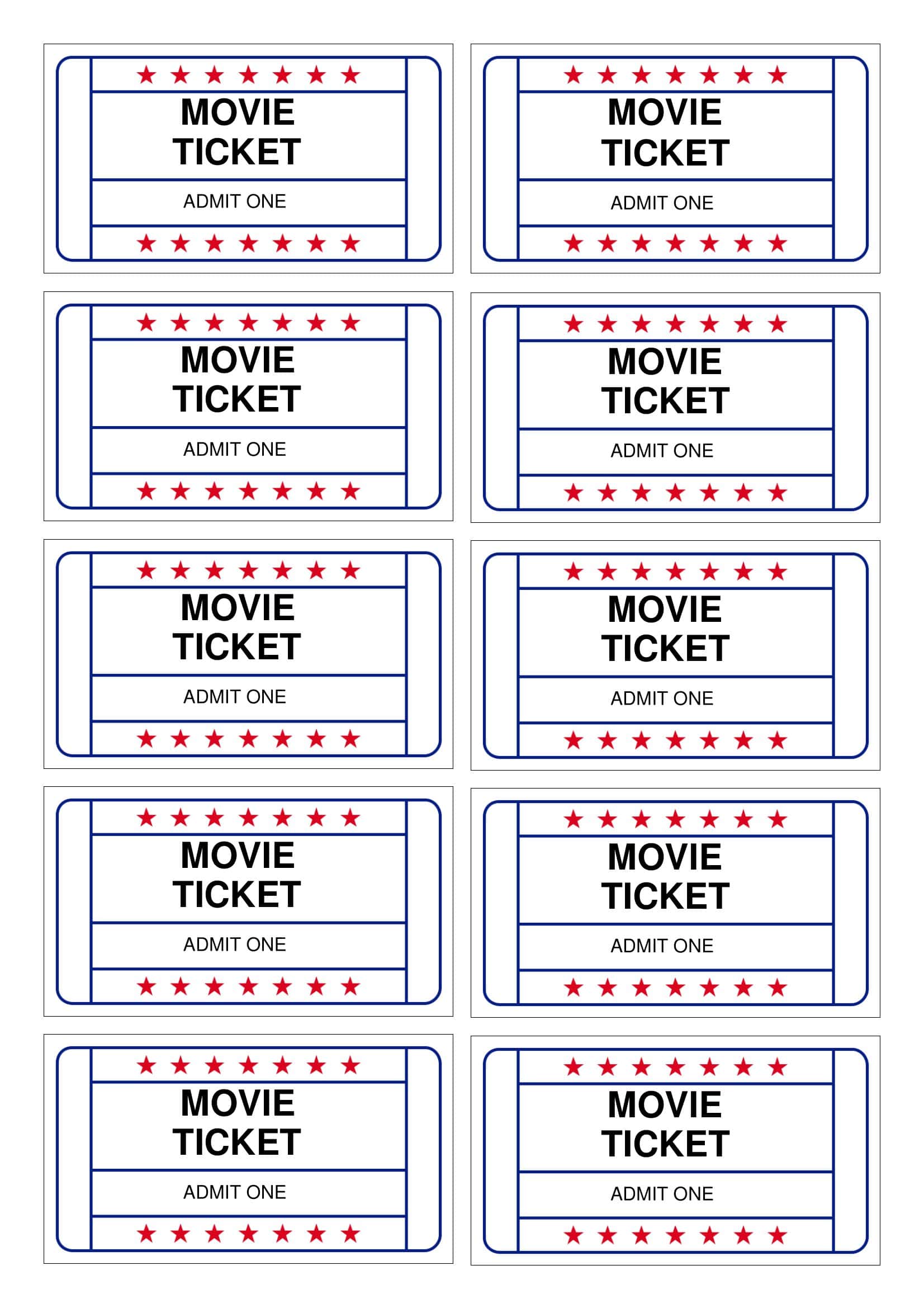














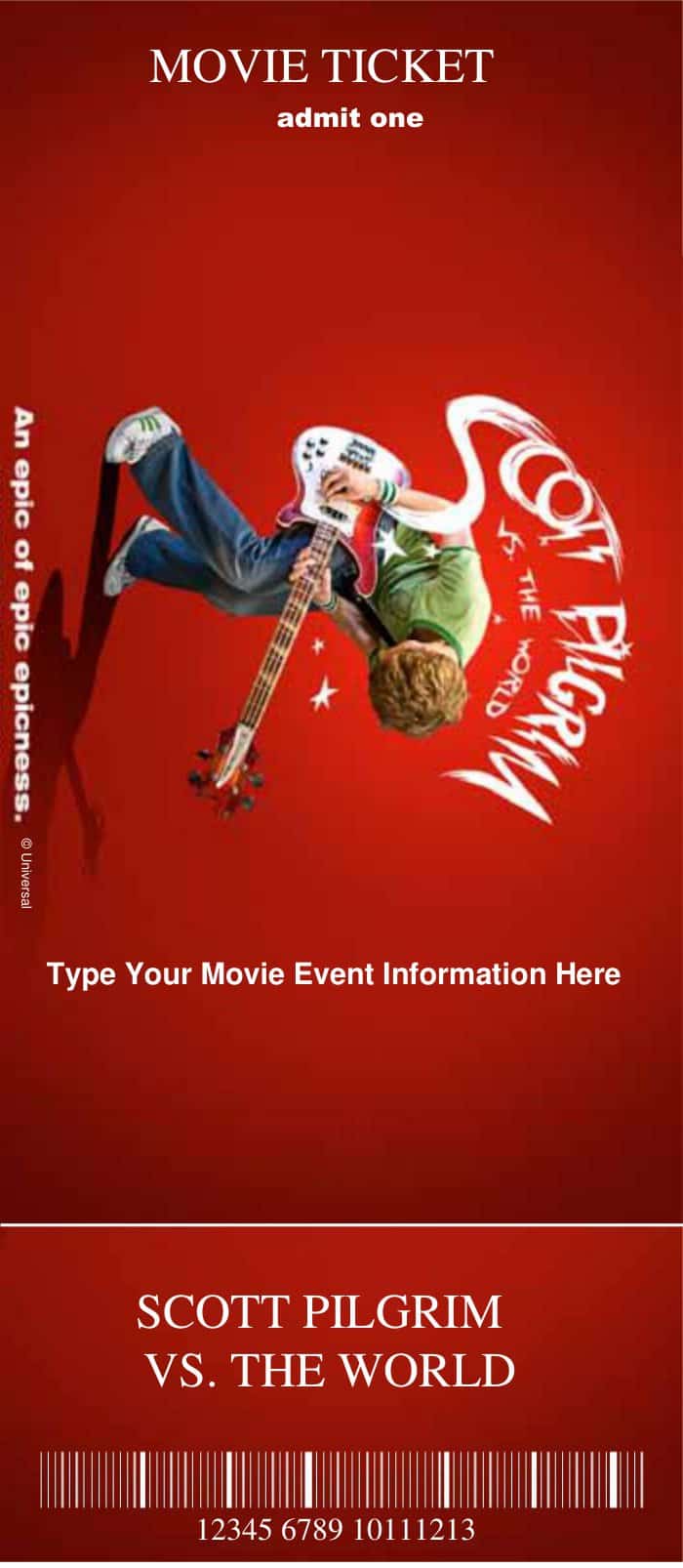
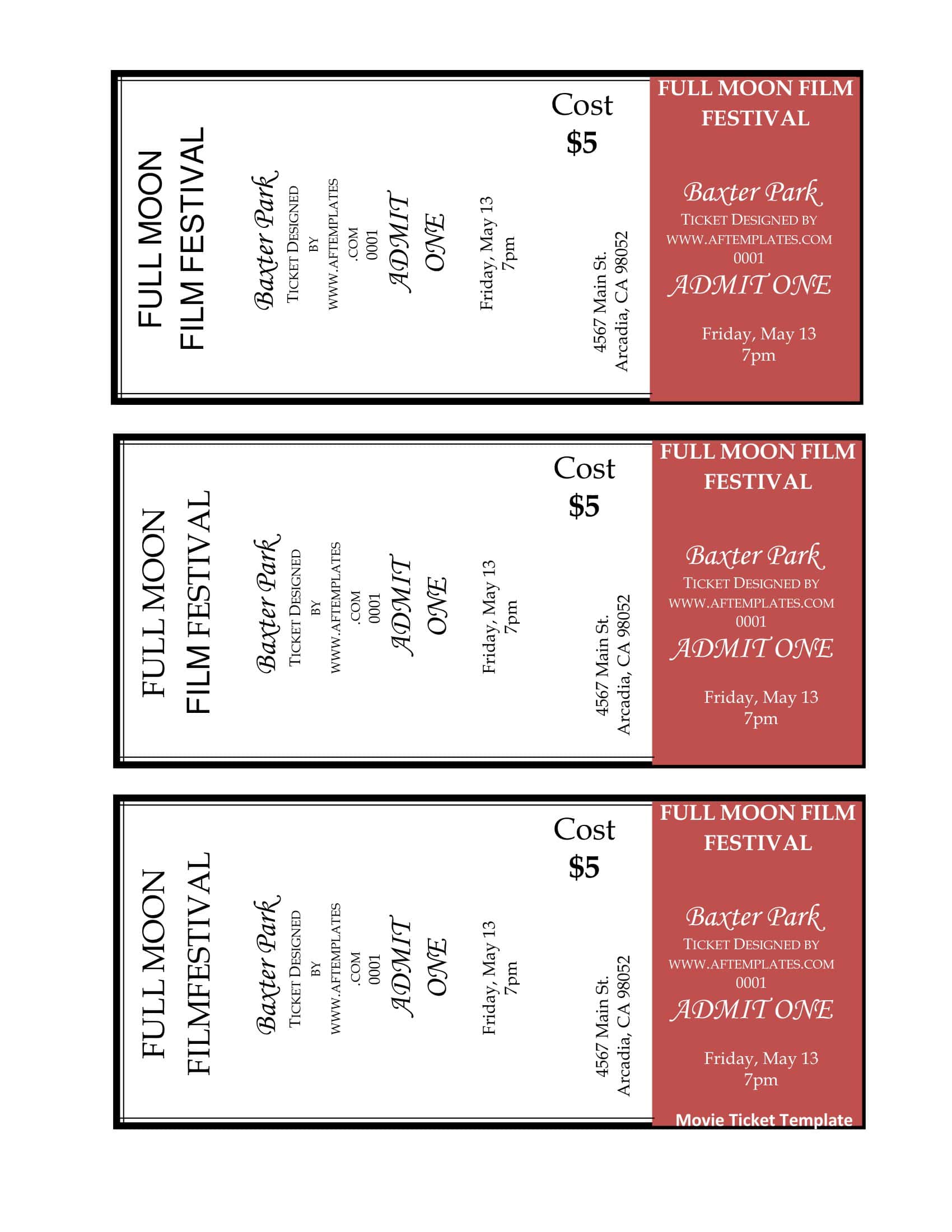
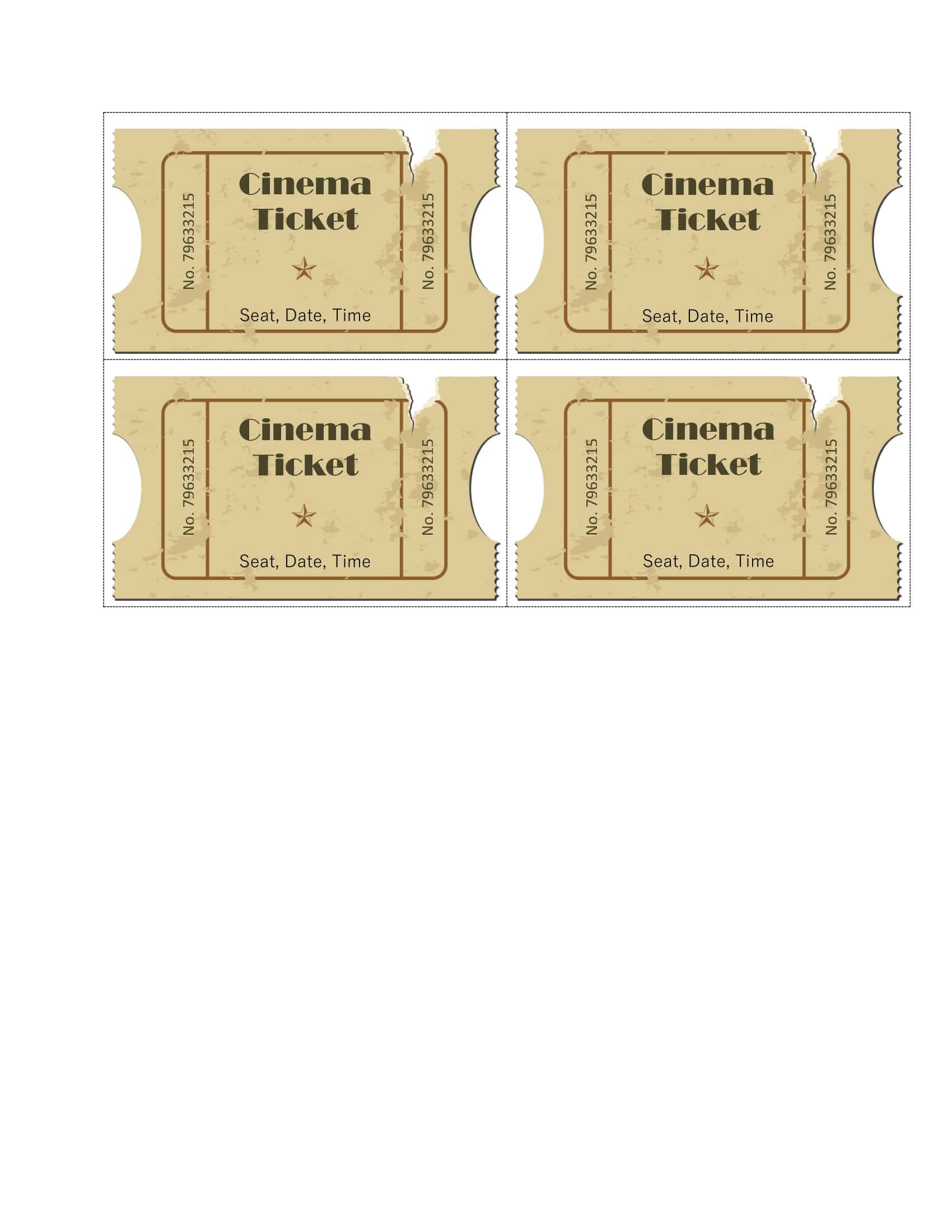





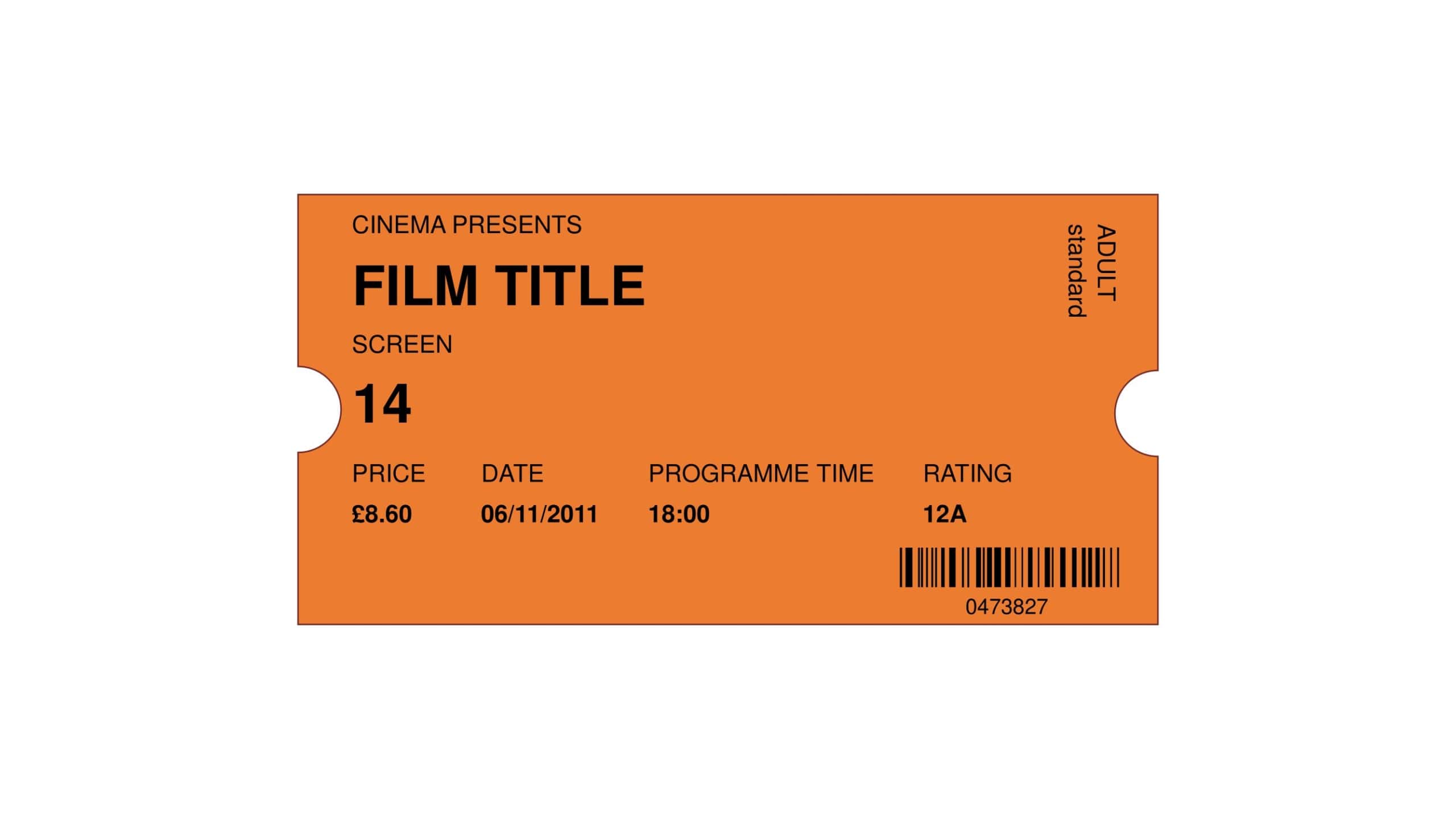

![Free Printable Golden Ticket Templates [Word, PDF] +Editable 1 Golden Ticket](https://www.typecalendar.com/wp-content/uploads/2023/03/Golden-Ticket-150x150.jpg 150w, https://www.typecalendar.com/wp-content/uploads/2023/03/Golden-Ticket-300x300.jpg 300w, https://www.typecalendar.com/wp-content/uploads/2023/03/Golden-Ticket-1024x1024.jpg 1024w, https://www.typecalendar.com/wp-content/uploads/2023/03/Golden-Ticket-768x768.jpg 768w, https://www.typecalendar.com/wp-content/uploads/2023/03/Golden-Ticket-1536x1536.jpg 1536w, https://www.typecalendar.com/wp-content/uploads/2023/03/Golden-Ticket-1200x1200.jpg 1200w, https://www.typecalendar.com/wp-content/uploads/2023/03/Golden-Ticket.jpg 1654w)
![Free Printable Event Ticket Templates [PDF, Word] Blank Editable 2 Event Ticket](https://www.typecalendar.com/wp-content/uploads/2023/02/Event-Ticket-150x150.jpg 150w, https://www.typecalendar.com/wp-content/uploads/2023/02/Event-Ticket-300x300.jpg 300w, https://www.typecalendar.com/wp-content/uploads/2023/02/Event-Ticket-1024x1024.jpg 1024w, https://www.typecalendar.com/wp-content/uploads/2023/02/Event-Ticket-768x768.jpg 768w, https://www.typecalendar.com/wp-content/uploads/2023/02/Event-Ticket.jpg 1080w)
![Free Printable Roommate Agreement Templates [Word, PDF] 3 Roommate Agreement](https://www.typecalendar.com/wp-content/uploads/2023/06/Roommate-Agreement-150x150.jpg)
